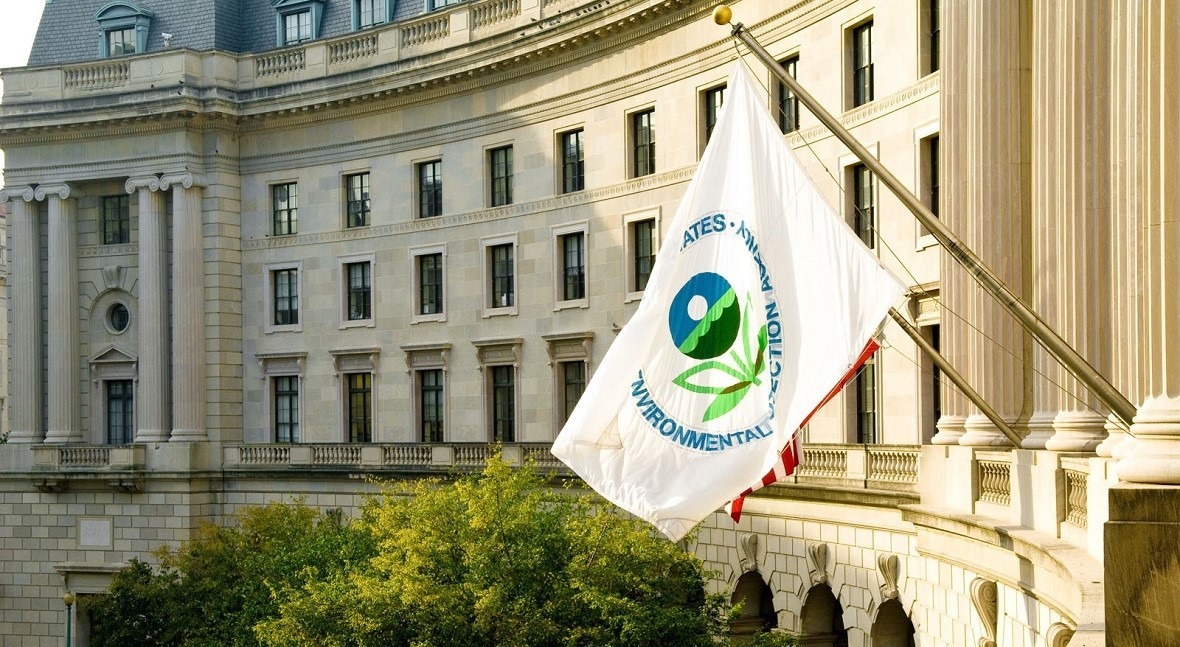Bruno Pigott: EPA recognizes cybersecurity as a key issue for water utilities

Based in Washington D.C., the EPA’s Office of Water works extensively with other EPA regional offices, federal agencies and state and local authorities to ensure the safety of drinking water in the United States. The EPA is currently in the process of finalizing several key water regulations, including the first-ever nationwide drinking water standard for six “forever chemicals”.
Bruno Pigott, second-in-command, took the helm of EPA’s Office of Water on an acting basis at the beginning of March, succeeding Radhika Fox. With over 20 years of experience at the Indiana Department of Environmental Management, Pigott joined the federal agency in December 2021 and since then, has played a key role in developing major water regulations. In his new role, Pigott aims to prioritize science, public health, and environmental protection, particularly focusing on underserved communities. Holding degrees from Michigan State University and Indiana University, Pigott brings a wealth of knowledge to his position. Only one month into the job, Smart Water Magazine had the opportunity of interviewing him about his new role and the EPA’s critical task of ensuring a future where no American ever has to worry about their water.
As the newly appointed acting assistant administrator for EPA’s Office of Water, what strategic priorities and future plans do you have in mind to advance the agency's mission and address pressing water-related challenges?
My highest priority is to ensure we are delivering on what we set out to do: follow science and the law to protect public health and the environment by making investments in communities’ water that will make a difference for generations to come.
This is precisely why, thanks to the Biden-Harris Administration, EPA is providing an unprecedented $50 billion in funding and assistance to communities. On top of that, we are working hard to make sure that this funding and assistance is getting to places that need it most. The top of our regulatory agenda for 2024 includes:
- Preventing thousands of deaths and tens of thousands of sicknesses by issuing a Final Drinking Water Rule for several PFAS
- Changing the health outcomes for hundreds of thousands of people by issuing the Final Lead and Copper Rule Improvements, which will help America achieve 100% removal of lead pipes in 10 years
- Protecting our nation’s water bodies by proposing Effluent Limit Guidelines that will limit the amount of pollutants discharged by coal-fired power plants
The Biden-Harris administration announced the largest investment in water infrastructure with $50 billion. Could you elaborate on why addressing water-related challenges has become a top priority for the administration?
Clean, safe water is at the heart of any thriving community. It’s essential to our health and it powers our economy by creating jobs and keeping businesses open.
The need for water infrastructure investment is great. Did you know that about 2.2 million people in this country don’t have access to basic wastewater services in their homes? And, that there are approximately 9 million lead service water lines still delivering tap water? On top of that, across the country, we are seeing climate stress play out as water stress from extreme flooding events to extreme drought, investment in resilient infrastructure is a must. The Biden-Harris Administration’s Bipartisan Infrastructure Law is an unprecedented investment in much needed water infrastructure improvements to address these challenges.
Thanks to the Biden-Harris Administration, EPA is providing an unprecedented $50 billion in funding and assistance to communities
The EPA recently announced over $5.8 billion to invest in drinking water and clean water infrastructure upgrades. How does the agency plan to ensure equitable distribution of these funds to underserved communities?
The recently announced $5.8 billion is part of the over $50 billion investment in water infrastructure upgrades from President Biden’s Bipartisan Infrastructure Law. These funds will be dispersed through the Clean Water and Drinking Water State Revolving Funds (SRF), one of EPA’s signature water investment programs and the monies fund state-run, low-interest loan programs with $2.6 billion going to the Clean Water SRF for wastewater and stormwater infrastructure and $3.2 billion going to the Drinking Water SRF for drinking water infrastructure. Almost half (49%) of this funding will be available as grants or principal forgiveness loans, ensuring funds reach underserved communities most in need of investments in water infrastructure.
Clean, safe water is at the heart of any thriving community and it powers our economy by creating jobs and keeping businesses open
Additionally, EPA’s Water Technical Assistance (WaterTA) programs are working to identify and help communities that have been historically left behind. These are communities that need water infrastructure investments but may not have the resources to develop solutions plans or engineering designs and apply for federal funding. EPA’s WaterTA works hand-in-hand with communities to help them access the funding. Our WaterTA program is already helping 750 communities across the country, and we’ve committed to doubling that over the next three years.
The pending EPA rule to remove "forever chemicals" from drinking water has raised concerns about potential financial implications for water utilities, forcing them to raise water bills. How does the EPA plan to address these concerns?
The PFAS Rule is an excellent example of how we’re putting Bipartisan Infrastructure Law funds to work. In fact, $9 billion of the $50 billion is specifically allotted for communities with drinking water impacted by PFAS and other emerging contaminants. An additional $12 billion in BIL funding is available for general drinking water improvements. And, EPA’s water technical assistant program is ensuring that disadvantaged communities can access this federal funding which will prevent thousands of deaths and tens of thousands of sicknesses.
.jpg)
Climate change poses significant challenges to water resource management. How does the EPA intend to adapt its strategies to address the evolving impacts of climate change on water quality and availability?
Climate stress is often felt as water stress in communities across the country. EPA’s water infrastructure investments are designed to support resilient solutions. Since 2018, our WIFIA low-interest loan program has invested nearly $20 billion to support over $43 billion in water infrastructure projects while creating 140,000 jobs. Bipartisan Infrastructure Law funding is also investing in resilient solutions from water infrastructure improvements to geographic program investments for issues like excess nutrients. Climate impacts must be factored into our investments and into our solutions, and thanks to EPA’s Climate Adaptation Plan climate impacts and climate resilience are part of the criteria for grant and loan funding.
Despite federal focus on addressing climate resiliency in the water sector, a recent NACWA report highlights the challenge utilities face in securing adequate funding for critical programs. Could you discuss the EPA’s strategies and initiatives aimed at remedying this issue?
It's true that accessing the historic federal funds made available for tackling climate change can be a challenge. That’s why EPA’s Water Technical Assistance (WaterTA) is so transformative. Through our WaterTA program, EPA is partnering with communities – listening and building community trust; all while supporting community leaders each step of the way towards accessing their share of water funding. Through this program, we are ensuring every person’s story in America is one of safely turning on the tap or flushing the toilet without fear or lack of access.
EPA’s Water Technical Assistance programs are working to identify and help communities that have been historically left behind
Through WaterTA, EPA collaborates with states, tribes, territories, local utilities, and other key stakeholders to provide hands-on support to assess their needs, identify potential solutions, and develop funding applications. This assistance complements and augments state efforts to reach more communities.
CRWU helps promote a clear understanding of climate data and helps water sector utilities identify potential adaptation strategies
Our Creating Resilient Water Utilities (CRWU) initiative is a WaterTA program aimed at improving climate resiliency. Through it, we are providing drinking water, wastewater, and stormwater utilities with practical tools, training, and technical assistance to increase system resilience to climate change impacts. CRWU helps promote a clear understanding of climate data and helps water sector utilities identify potential adaptation strategies, implementation options, and infrastructure financing.
EPA is currently investing $500 million in expanded Water Technical Assistance services. With this funding, EPA is already working with dozens of WaterTA providers to reach hundreds of communities. Our partners are actively working with communities to address their most pressing water challenges. Communities can now use a simple online form to request WaterTA support. This and other resources are available at www.epa.gov/WaterTA.
How is the EPA actively addressing the growing concern of cybersecurity threats within the water sector?
EPA recognized cyber security as one of the most critical issues water utilities must tackle today. As such, EPA is working to provide all water systems the assistance they need to protect themselves against cyber threats. We are working closely with America’s cyber defense agency, the Cybersecurity Infrastructure Security Agency (CISA) to identify and implement solutions. CISA’s Water Sector Coordinating Council (WSCC) and Water Government Coordinating Council (WGCC) just completed an update of their 2024 Roadmap to a Secure and Resilient Water and Wastewater Sector, which includes priority actions that will directly inform all our work.
Last year, EPA shared a complete list of all its security and resilience projects, including cyber projects, with the WSCC and WGCC, with an invitation to engage in the design and review of any project. For example, we have a collaborative effort with the National Rural Water Association (NRWA) to train circuit riders on using its cyber tool for small system assessments.
EPA is working to provide all water systems the assistance they need to protect themselves against cyber threats
EPA is also providing cybersecurity technical assistance to the water sector, providing systems with direct access to subject matter experts and we are continuing to conduct cyber assessments for small water systems under our Cybersecurity Evaluation program, where a government contractor will conduct a free assessment and generate a cyber mitigation plan for the utility.
EPA will continue to work with its federal partners including the Department of Homeland Security and the Department of Defense to support drinking water and wastewater systems that serve military-related facilities.
EPA understands that cyber preparedness comes at a cost and helps systems learn how to access and apply for funding such as the Drinking Water System Revolving Fund, the Infrastructure Resilience and Sustainability Grant and other state and local sources, to support systems in investing in cybersecurity projects.
How does the EPA envision the state of the US water sector in the next decade, and what key initiatives or developments do you foresee shaping its future trajectory?
The challenges facing the water sector will continue to grow in complexity, due to several factors, including the increased frequency of extreme weather events; the continued emergence of new contaminants; and the threat of disrupted water service due to cyber vulnerability.
The good news is innovation, partnership, and federal funding will help communities face these challenges head-on.
EPA’s Office of Water will remain steadfast in our commitment to a future of fishable, swimmable, drinkable water – a future where no American ever has to worry about their water.




